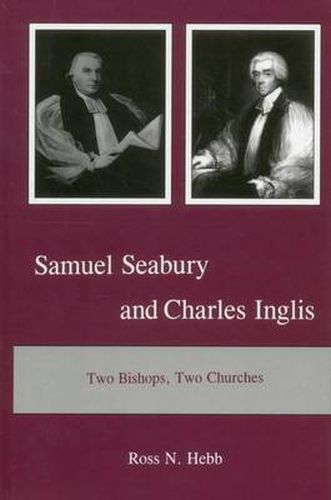Readings Newsletter
Become a Readings Member to make your shopping experience even easier.
Sign in or sign up for free!
You’re not far away from qualifying for FREE standard shipping within Australia
You’ve qualified for FREE standard shipping within Australia
The cart is loading…






Samuel Seabury (1729-96) and Charles Inglis (1734-1816) were the first bishops of the Anglican churches in the United States and Canada respectively. This study compares and contrasts the seminal episcopal ministries of both men. Areas investigated include the introduction of episcopal ministry into virgin territory respecting such matters as confirmation, ordination, and clerical discipline. Unlike Inglis, Seabury was forced to deal with wholesale liturgical revision. Seabury rejected the Proposed Prayer Book of 1785 and the revision of 1789. While both editions were generally accepted for the sake of denominational unity, they were far from Seabury’s ideal. As liturgical revision was intertwined with polity, ecclesiology is considered in detail in the concluding chapter. Through a consideration of the early Lambeth Conferences, the conclusion draws out the implications for the Anglican Communion of these two seminal episcopacies. It is argued that the polity and liturgy of each national church established in Seabury’s and Inglis’ era has had implications reaching far beyond their own times.
$9.00 standard shipping within Australia
FREE standard shipping within Australia for orders over $100.00
Express & International shipping calculated at checkout
Samuel Seabury (1729-96) and Charles Inglis (1734-1816) were the first bishops of the Anglican churches in the United States and Canada respectively. This study compares and contrasts the seminal episcopal ministries of both men. Areas investigated include the introduction of episcopal ministry into virgin territory respecting such matters as confirmation, ordination, and clerical discipline. Unlike Inglis, Seabury was forced to deal with wholesale liturgical revision. Seabury rejected the Proposed Prayer Book of 1785 and the revision of 1789. While both editions were generally accepted for the sake of denominational unity, they were far from Seabury’s ideal. As liturgical revision was intertwined with polity, ecclesiology is considered in detail in the concluding chapter. Through a consideration of the early Lambeth Conferences, the conclusion draws out the implications for the Anglican Communion of these two seminal episcopacies. It is argued that the polity and liturgy of each national church established in Seabury’s and Inglis’ era has had implications reaching far beyond their own times.